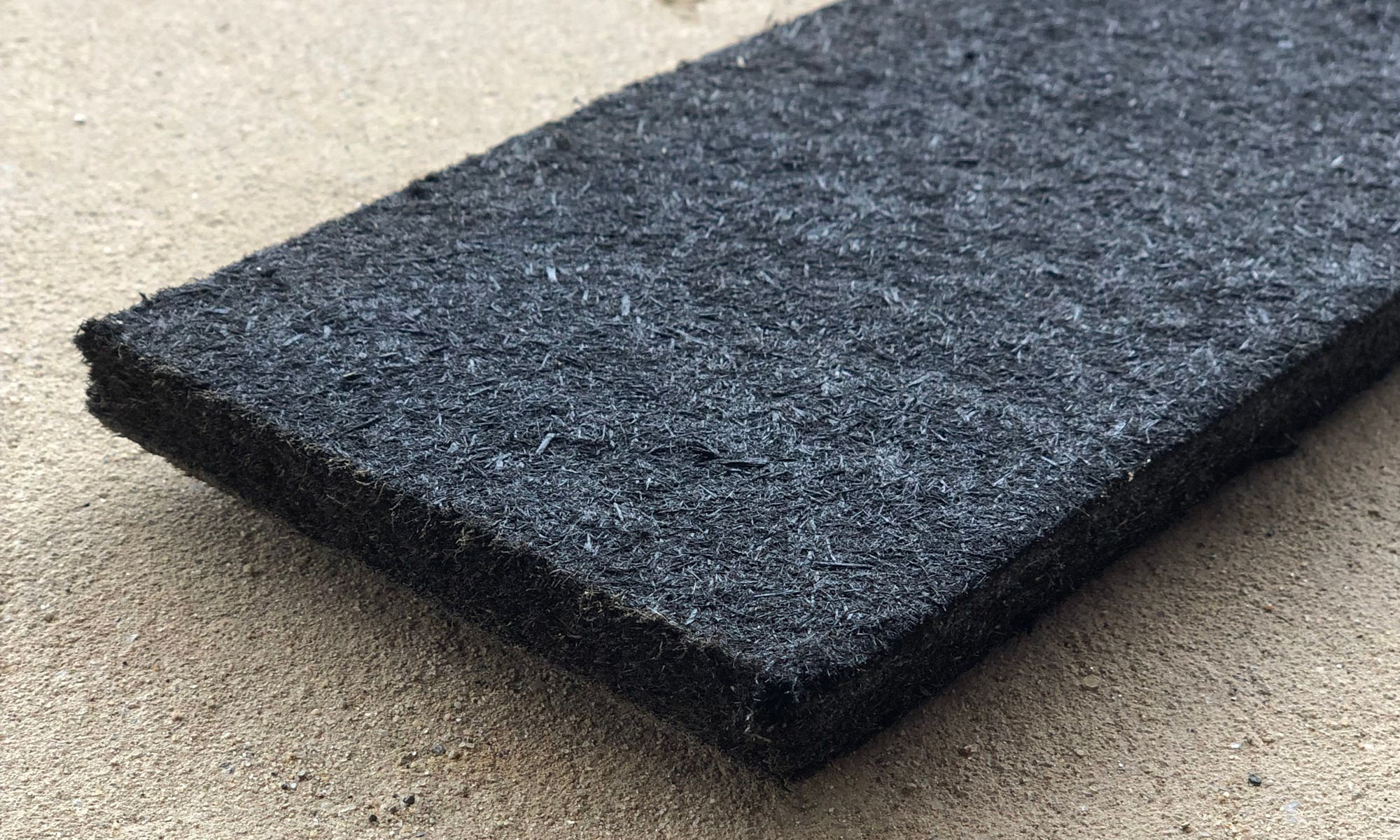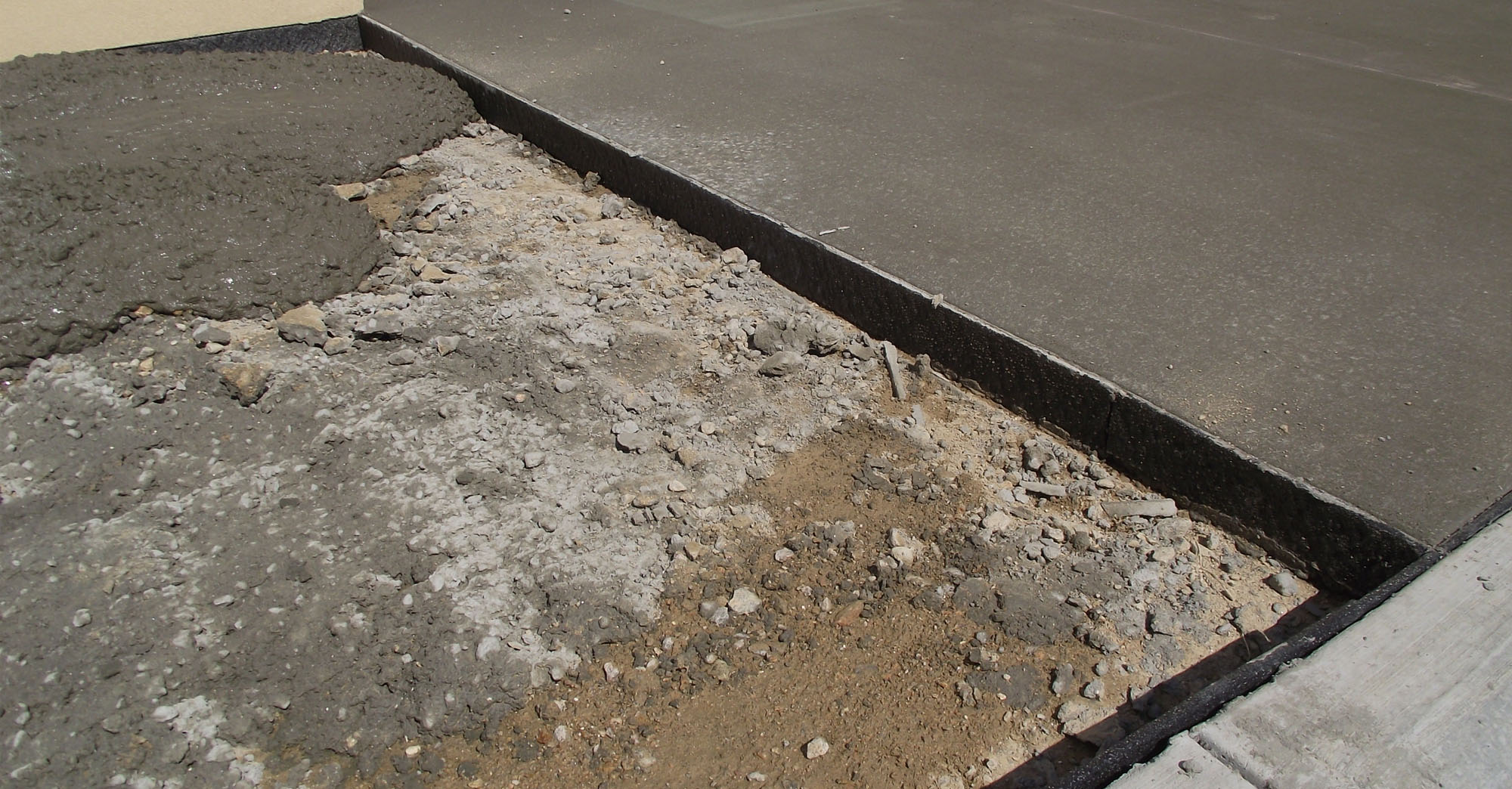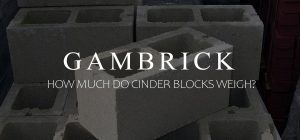
What Are Concrete Expansion Joints?
Concrete Expansion Joints, a.k.a. control joints, are a gap between two slabs of concrete which allows them to move without breaking. This gap allows each slab of concrete to move independently and freely from one another. You may think concrete is so hard that it doesn’t move but that’s not the case. Concrete expands and contracts as it changes temperature. It can also shift with the movement of the earth. Concrete expansion joints give the slab room to move which helps prevent cracks & buckling. Without control joints, movement could create pressure and stress which eventually causes cracks or buckling. Expansion joints are used to relieve pressure and prevent damage.
I’ve been a mason for over 25 years and can tell your firsthand how important expansion joints are to a slab. Concrete is extremely stiff and doesn’t contain any elasticity. As your slab expands and contracts, it can crack if you don’t have joints to relieve the pressure. When concrete cracks, it’s essentially doing the job of an expansion joint.
Expansion joints absorb pressure and prevent cracks.
Joints are even more important if your slab is weak and prone to cracking, potentially due to a bag mix ratio, or the concrete being too wet when mixed.
Concrete mixes for patios, driveways, and other slabs are very hard, with almost no flexibility. When they move into another hard object, there’s a chance for cracking. Expansion joints help to prevent cracks be giving the concrete somewhere to safely move.
Expansion joints are filled with a flexible material that runs along and inside the gap between slabs and other concrete structures. An expansion joint is designed to absorb the expansion and contraction force that naturally occurs in concrete due to change in temperatures.
What Is A Concrete Expansion Joint?
A concrete expansion joint, or control joint, is a gap between two concrete slabs. It allows the concrete to move when it expands and contracts due to temperature changes. Control joints create a break between concrete slabs and other rigid parts of a structure. They allow movement without causing stress which helps prevent cracking.
Control joints should be used in all large concrete slabs such as foundations, patios, sidewalks and driveways.
Why Do You Need Concrete Expansion Joints?
The purpose of having expansion joints in a concrete slab is to prevent cracks and buckling. Joints prevent damage to the slab which makes them last longer and look better.
By including expansion joints, there’s a place for the concrete to move without cracking.
If a concrete slab is too big and doesn’t have expansion joints, when the structure shifts, vibrates, expands or contracts, the stress and pressure finds relief by cracking. Expansion joints are used to prevent these cracks.
Here are some places where you should use an expansion joint:
- Joints are used in areas where two slabs of concrete meet.
- When a slab meets another concrete structure like a wall or set of steps.
- If a span of concrete is overly long. For example, a 100 ft. concrete sidewalk wouldn’t be poured in one long slab. You’d get lots of cracks. Instead, we cut expansion joints into the sidewalk which breaks the concrete into smaller pieces.
- Driveways, patios and other large slabs.
- Basement slabs.
- When pouring concrete within an area bordered by walls or buildings.
- If objects such as manhole covers are incorporated in the slab.
- Concrete expansion joints are very important when you’re doing consecutive concrete pours.
All concrete will shrink slightly as it dries. Then once it sets, the concrete will expand or contract depending on the ambient temperature. To prevent cracks, concrete expansion joints should be used to allow for movement.
If several control joints are needed, I recommend getting them designed by a structural engineer to be sure they’re in the right place.

Closeup view of a fiber expansion joint.
Characteristics
The most important purpose of an expansion joint is to allow for the expansion of the surrounding cement. Expansion joints give the concrete somewhere to go as it moves. Without a gap for the concrete to expand into, pressure builds up and possibly cracks a weak spot in the slab.
Concrete moves with changes in temperature, from vibrations and movement in the earth. Joints also help keep concrete strong while the soil around it settles.
You can see the expansion joints pretty much anywhere concrete is used on the ground. Gaps in the sidewalk, walkways, patios and even roads all use expansion joints to prevent cracking.
Types
There are a few different types of expansion joints used in concrete construction. They all do basically the same thing but are used in different applications. Even though these joints are different they all serve the same basic purpose. Which is to allow for movement and prevent cracking.
- Bridge Expansion Joint. These are designed to allow for continuous traffic between structures while allowing for movement, shrinkage, and temperature variations in the concrete and steel. Because bridges move quite a bit and the concrete needs to move with it. Without joints, the concrete would be prone to cracking.
- Masonry Expansion Joints. These are primarily used in laying bricks. Including a joint in place of mortar helps with the movement of the bricks. Just like a bridge, buildings move. If the concrete can’t move with it you’ll get cracks.
- Railway Expansion Joints. These are commonly used when a railway crosses a ravine, road, or body of water.
- Pipe Expansion Joints. High-temperature substances like steam or exhaust pipes cause the surrounding concrete to heat and cool quickly. Without expansion joints that concrete would crack much easier. .
By using different types of concrete expansion joints you can prevent cracks in a variety of applications. Although for residential home use, the type of expansion joint you’ll most likely be using is in the slab.
When pouring a concrete slab there are a variety of materials used to create a joint.
- Metal. Can withstand more heat and pressure.
- Asphalt. Waterproof and self sealing.
- Fiber. Flexible and easy to work with. Great for sidewalks and patios.
- Cork. Flexible and easy to work with. Great for sidewalks and patios.
- Sponge/ Rubber. Very good in areas that see a lot of vibration.

Fiber expansion joints being installed in between slabs.
Installation
Concrete expansion joints can be installed before or after the concrete is poured.
If you install them first, a flexible material is inserted along the length of the joint before the concrete is poured.
If you install them after, a concrete saw is used to cut the joints. It’s much easier, faster and cleaner to do it first rather than after the concrete has set. Once the joint is cut, flexible material can be inserted into the groove.
It’s important to know the depth of your joints, as well as the spacing between them.
Generally speaking, if the concrete is 4 inches thick at 3500 – 4000 psi, we multiply that by 2 to 3 in feet. That gives you a joint every 8 to 12 feet.
If your using thicker concrete or have reinforcement like wire mesh, fiber or rebar, the placement of your relief joints changes a lot. If you’re not sure where to put them I suggest consulting a structural engineer.
Err on the side of caution. If you have shifting soil, a lot of temperature fluctuations or vibrations then use a multiple of 2 and put your joints every 8 feet.
Joint Depth
When you install your expansion joints before the concrete is poured, the joints go all the way through the slab. When you’re done the slabs will be completely separate structures. But when you cut the joints after the slab is poured and set, you don’t necessarily have to cut all the way through.
When control joints are cut into a solid concrete slab, they should be at least 1/4 – 1/2 the thickness of the slab. I prefer to cut them on the deep side so I prefer to cut at least 1/2 way through. This means for a standard 4 inch slab I cut my joints at least 2″ deep.
If you’re cutting control joints after the concrete has set, don’t wait too long. The concrete could crack while you’re waiting. I cut my joints within 12 hours of the pour. This is a nice time to cut concrete because it’s not 100% cured which makes cutting a little easier.
If possible, place control joint right next to walls or other structures where you won’t see them.
Preparation Tips
Ready made concrete joints are sold just about anywhere masonry supplies are and we recommend you use them. Cut them to be the same height as the thickness of your concrete. So for a 4″ thick sidewalk you’ll cut 4″ expansion joints.
As you pour each slab of concrete, stop and place your joint in between each slab. A joint trowel tool can be used to ensure there is a space between each slab.
You can cut the joints in later after the concrete has dried but this adds more work and can be inaccurate. I’ve seen plenty of joints that were not cut straight or accurately. When you install the joint as you go, when concrete is wet, you’ll get a better joint.
Post Concrete Installation Tips
If you install your joints while the concrete is being poured, there’s not much to do after the concrete hardens. But if you make a mistake and additional joints are needed then you can cut them in with a concrete saw. Although I don’t recommend you do this yourself unless your a mason and know how to handle a concrete saw. They’re big, heavy, powerful, and put out a ton of concrete dust.
A concrete saw can be used to make a groove in the concrete to allow more expansion. Make sure to have your lines snapped before you begin cutting. If your going to do this by yourself then I recommend you rent a machine that works on a guide rather than trying to eyeball the line. The cut has to be perfect because it’s always visible. Depth is easy but keeping the line perfectly straight isn’t.
Fillers
Concrete expansion joint material should extend the full depth and width of the slab. Ideally, for expansion joints on the exterior of a structure, sealing these joint is preferable. A filler helps keep water and material from getting into the joint.
I like to use a high quality urethane caulk. Because I don’t like to do maintenance I use a better caulk/sealant. Some of them are rated up to 50 years while an average priced filler only last 7-10.
Repairs
Expansion joints don’t need much maintenance but it’s a good idea to check them every now and then.
Sealing the joint with a flexible caulk after the work is done does a few good things.
- It looks nice if you install it correctly.
- Caulk helps keep debris from getting kicked into the joint.
- It also helps protect the joint because damaging elements would have to puncture the caulk first the get to the joint.
- It’s easier to remove snow and ice from the surface.
- Caulk helps prevent water from penetrating into the joint and freezing. This is another way concrete can crack.
Caulk typically lasts from 7 to 10 years. After that you should gauge out the old caulk and reapply.Fill in any small cracks you see too. Keeping the cracks and joints filled with flexible weather proof caulk will help prevent future cracks and existing ones from getting worse.
A Few Helpful Tips
- Don’t cover your joints or caulk with epoxy or another coating unless it’s specially made for use on expansion joints.
- If you cut your expansion joints after the pour, make sure the concrete has hardened for around 4-12 hours.
- Plan the exact location of all your joints so the slab looks even and uniform.
- Only use approved material for your joints.
- Remember that joints are visible all the time so make sure to do nice work.
- Expansion joints aren’t just for the inside joints. If your slab butts up against another structure like a foundation then use a joint at the end between the slab and concrete wall.
Expansion joints are a crucial part of working with concrete.
Placing Tips
Here’s a few tips on where to place your joints.
- Maximum Joint Spacing should be 24 to 36 times the thickness of the slab. Although I don’t recommend using the maximum spacing unless your a Pro.
- Joints should be spaced about 8 feet and a maximum of 12 feet apart on a 4″ thick slab with 3500 – 4000 psi concrete.
- Saw-cut joints should be done within 4 to 12 hours after the concrete has been finished.
- Pre-molded joint filler should be used to separate slabs from building walls and footings.
- If the slab contains wire mesh, I recommend you stop the mesh at the joint.
- Joints should be spaced so that the concrete sections are even and uniform.
- It’s recommended to have concrete joints along column lines.
- Plan the exact location of all your joints before doing any work.
- Use expansion joints between slabs and columns, walls, footings and wherever curbs or sidewalks meet other concrete structures.
- Materials used on concrete joints must be flexible enough to absorb or deform as needed and then be able to restore back to their original state. That’s why fiber and cork work so well.
- Look for material that is permeable, and can bond to the concrete.
Tools
The following tools are normally used to create concrete joints. These tools may vary depending on the size and scope of the project. Here are the most commonly used tools:
- Hand Grover or Walking Grover. Depending on how large the slab is these are both good choices.
- Cordless Control Joint Tools. Great for use on small to medium size projects.
- Concrete Saw. Designed for saw cutting concrete. These are heavy and very powerful saws that create a lot of dust. I don’t recommend using them for long cuts unless you know what your doing.
- Guided Concrete Saws. I highly recommend renting a guided power saw if you have long cuts to make. It’s not easy cutting a 20 foot line in concrete that needs to be perfectly straight. Even a little wiggle will ruin the look of your patio.
Expansion Joints Are Visible
When it comes to using expansion joints, keep in mind that they’re visible all the time. There are a few things you should think about other than the function purpose of the joint.
First and foremost, people want they’re concrete work to look nice. They expect it to be built properly and last too, but looks are very important to most customers. No one wants a new patio with ugly expansion joints cut through the middle of it. Keep this in mind when you choose your joint materials and locations.
Second, consider your filler material carefully if your using one. Some types are nicer than others.
Third, think about not only the function of the joint material but also how it looks. If your not using a filler then you’ll see the joint material all the time.
Fourth, consider the location of each joint. Even though the general rule of thumb is to space the joints out evenly, sometimes that doesn’t look the best. It’s OK to stagger then if the appearance is better. Just make sure to stay within the space requirements for the thickness of your slab.
Last, consider coloring. Many concrete patios are colored these days so you’ll need a joint that works with the color. Some fillers can be painted or come pre-colored which can be a big help.
Are Concrete Expansion Joints Necessary?
Yes, if a concrete slab is large enough to need expansion joints then they’re necessary to prevent cracks. As concrete expands and contracts it needs room to move. Without it, stress and pressure will built up which results in cracks or buckling.
Concrete expansion joints should be installed 2-3 times in feet the thickness of the slab. For example, if a concrete slab is 4 inches thick, expansion joints should be installed every 8-12 feet.
How Often Should You Put Expansion Joints in Concrete?
Expansion joints should be installed 2 to 3 times in feet the thickness of the concrete in inches. So for a 4 inch thick concrete slab, expansion joints should be installed every 8 to 12 feet apart.
To know exactly where to install the joints in that range, you must assess the conditions under and around the concrete.
- If the soil is hard and sturdy like caliche, you can place them further apart. But when it’s soft, wet or unstable, place them closer together.
- Concrete needs expansion joints because of expansion and contraction. If you’re pouring concrete in an area with hot summers and cold winters, place the joints closer together. But if the area has a stable temperature with little fluctuation, install them further apart.
Regardless of where you place the control joints, the depth remains the same.
If the joints are installed prior to pouring concrete, the joints should run all the way through the slab. But if you’re cutting the joints after the slab is poured and set, they should be 1/4 to 1/2 the thickness of the slab. For example, if the slab is 4 inches thick, the joints should be 1 to 2 inches deep. I prefer cutting them deeper just to be on the safe side.
How Big Can A Concrete Slab Be Without Expansion Joints?
Expansion joints need to be installed 2 to 3 times in feet the thickness of a concrete slab in inches. So if your slab is 4 inches thick, the slab can be 8 to 12 feet long or wide without requiring an expansion joint. Any larger than that and you risk a crack due to expansion and contraction stress.
Do I Need Expansion Joints In A Concrete Patio?
Expansion joints need to be installed 2 to 3 times in feet the thickness of a concrete slab in inches. So if your patio is 4 inches thick, it can be 8 to 12 feet long or wide without requiring an expansion joint. Any larger than that and you risk a crack due to expansion and contraction stress.
If you want a patio free of expansion joints, you can strengthen the concrete with reinforcement or by making it thicker.
Do I Need Expansion Joints In A Concrete Driveway?
Expansion joints need to be installed 2 to 3 times in feet the thickness of a concrete slab in inches. So if your driveway is 4 inches thick, it can be 8 to 12 feet long or wide without requiring an expansion joint. Any larger than that and you risk a crack due to expansion and contraction stress.
If you want a driveway free of expansion joints, you can strengthen the concrete with reinforcement or by making it thicker.
Do I Need Expansion Joints In A Concrete Sidewalk?
Expansion joints need to be installed 2 to 3 times in feet the thickness of a concrete slab in inches. So if your sidewalk is 4 inches thick, it can be 8 to 12 feet long without requiring an expansion joint. Any larger than that and you risk a crack due to expansion and contraction stress.
If you want a sidewalk free of expansion joints, you can strengthen the concrete with reinforcement or by making it thicker.
Summary: What Are Concrete Expansion Joints?
Concrete Expansion Joints, a.k.a. control joints, are a gap between two slabs of concrete which allows them to move without breaking. This gap allows each slab of concrete to move independently and freely from one another. You may think concrete is so hard that it doesn’t move but that’s not the case. Concrete expands and contracts as it changes temperature. It can also shift with the movement of the earth. Concrete expansion joints give the slab room to move which helps prevent cracks & buckling. Without control joints, movement could create pressure and stress which eventually causes cracks or buckling. Expansion joints are used to relieve pressure and prevent damage.
Concrete is extremely stiff and doesn’t contain any elasticity. It’s not a forgiving material. Expansion and contraction pressure inside the concrete builds as the temperature changes. This pressure relieves itself by cracking. The new crack is essentially doing the job of an expansion joint. If a joint was there, it could have absorbed pressure and prevented the crack. This is why expansion joints are used.
Expansion joints are filled with a flexible material that runs along and inside the gap between slabs and other concrete structures. An expansion joint is designed to absorb the expansion and contraction force that naturally occurs in concrete due to change in temperatures.
Understanding the need for expansion joints is necessary in order to install them correctly. Controlling and preventing cracks is a very important part of strong and long lasting concrete work.
If you have any questions or comments e-mail us any time. We’d love to hear from you.

John Mazzuca | About | More Posts |
Custom Home Builder
John Mazzuca is a custom home designer and builder at Gambrick with over 25 years experience in the construction industry. John has designed, built and/or remodeled hundreds of homes, small buildings, and commercial projects. He writes about business, real estate, home building, and household electronics. His work has been featured in Fox Business, Better Homes & Garden, House Beautiful, and more.




















